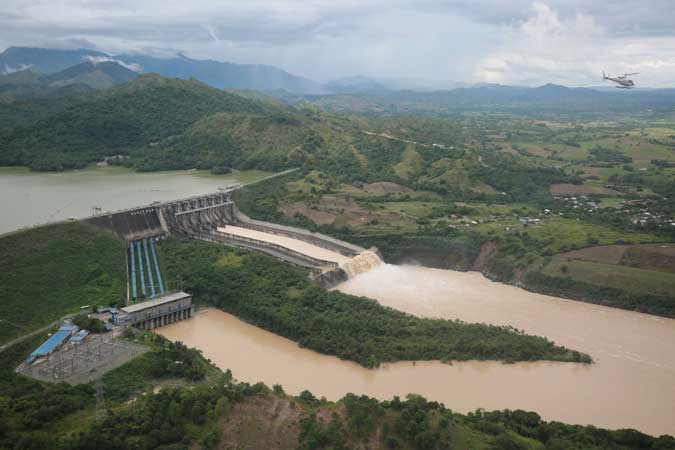LAWMAKERS on Tuesday sought an investigation of dam operations in Marikina and Cagayan Valley and logging activities in the Sierra Madre that supposedly caused heavy flooding when Typhoon Vamco hit Luzon last week, killing at least 73 people.
In separate resolutions, senators and congressmen said the probe would determine the accountability of dam and illegal logging operators for the deaths.
The typhoon, locally named Ulysses also hurt 24 people, while 19 were still missing, the local disaster agency said in a Nov. 17 bulletin.
“We need to study the gaps and fill them immediately,” Senator Risa N. Hontiveros-Baraquel said in a statement. “This can’t keep on happening.”
She said climate disasters in the middle of a coronavirus pandemic have created unique problems never before seen in the country.
She added that logging and land-grabbing activities in the Upper Marikina Watershed and in Sierra Madre mountain range had contributed to the severe flooding.
Party-list Rep. Bernadette Herrera-Dy said opening seven dams in various parts of Luzon island — Angat, Ipo, La Mesa, Ambuklao, Binga, San Roque and Magat dams — caused heavy flooding in Isabela, Pangasinan, Benguet, Isabela, Cagayan and Metro Manila.
Typhoon Vamco, the 21st typhoon to hit the country this year, brought rainfall ranging from 271 millimeters to 356 millimeters, far below the 455 millimeters of rainfall brought by Tropical Storm Ketsana, locally named Ondoy, in 2009.
Ms. Dy cited reports that the dams had released water “not in a gradual manner, but rather in a hasty and rushed manner.” Magat dam alone opened seven gates, on Nov. 12, discharging 6,244 cubic meters of water per second, she added.
‘IRRESPONSIBLE’
“This irresponsible release of millions of cubic meters of water resulted in further aggravating the flash floods, leading to loss of life and millions in property damage,” she said.
Two to three days before Typhoon Vamco struck, Magat failed to make sufficient water drawdown in violation of its own protocol, Ms. Herrera-Dy said, citing a report by Infrawatch PH.
These dam and catch basin operators function independently and did not coordinate with the local disaster agency, she said. “The management of these dams and catch basins must be called to account.”
Vamco was the fifth typhoon to hit the country in less than three weeks, submerging many parts of Luzon island and leaving half-a-million people without electricity.
The storm, locally named Ulysses, made landfall in Quezon province on Nov. 11 and crossed Central Luzon, according to the local weather bureau.
It weakened into a severe tropical storm over the South China Sea, but strengthened into a typhoon just as it left the Philippine area of responsibility, it added.
Senator Francis N. Pangilinan said there is a protocol on the Magat dam discharge and flood warning that should involve the local weather bureau and local government units.
“Inspections should also have been made or checkups on warning stations and equipment,” he said in a statement in Filipino. People should also have been warned through text, radio and local television, he added.
Mr. Pangilinan said Magat dam was supposed to have made sufficient water drawdown two to three days before the typhoon made landfall. The gates of the dam, however, remained close three to four days before the landfall, he pointed out, citing Infrawatch PH.
Mr. Pangilinan, a former chairman of the National Irrigation Administration, said the Senate probe would look into the compliance of dam operators with such protocols.
The National Disaster Risk Reduction and Management Council (NDRRMC)on Tuesday said dams would have broken if they had not released water to prevent overtopping, spokesman Mark Timbal told ABS-CBN Teleradyo.
He said releasing water from dams is supposed to mitigate disasters, noting that unreleased water could break structures and flood nearby communities.
Cagayan Governor Manuel Mamba earlier blamed the heavily silted Cagayan River, Typhoon Vamco’s rainfall and water from Magat Dam for the floods that submerged the province.
Mr. Timbal said they are studying a proposal from mayors to be the authority in deciding dams’ water release. — Kyle Aristophere T. Atienza and Charmaine A. Tadalan

